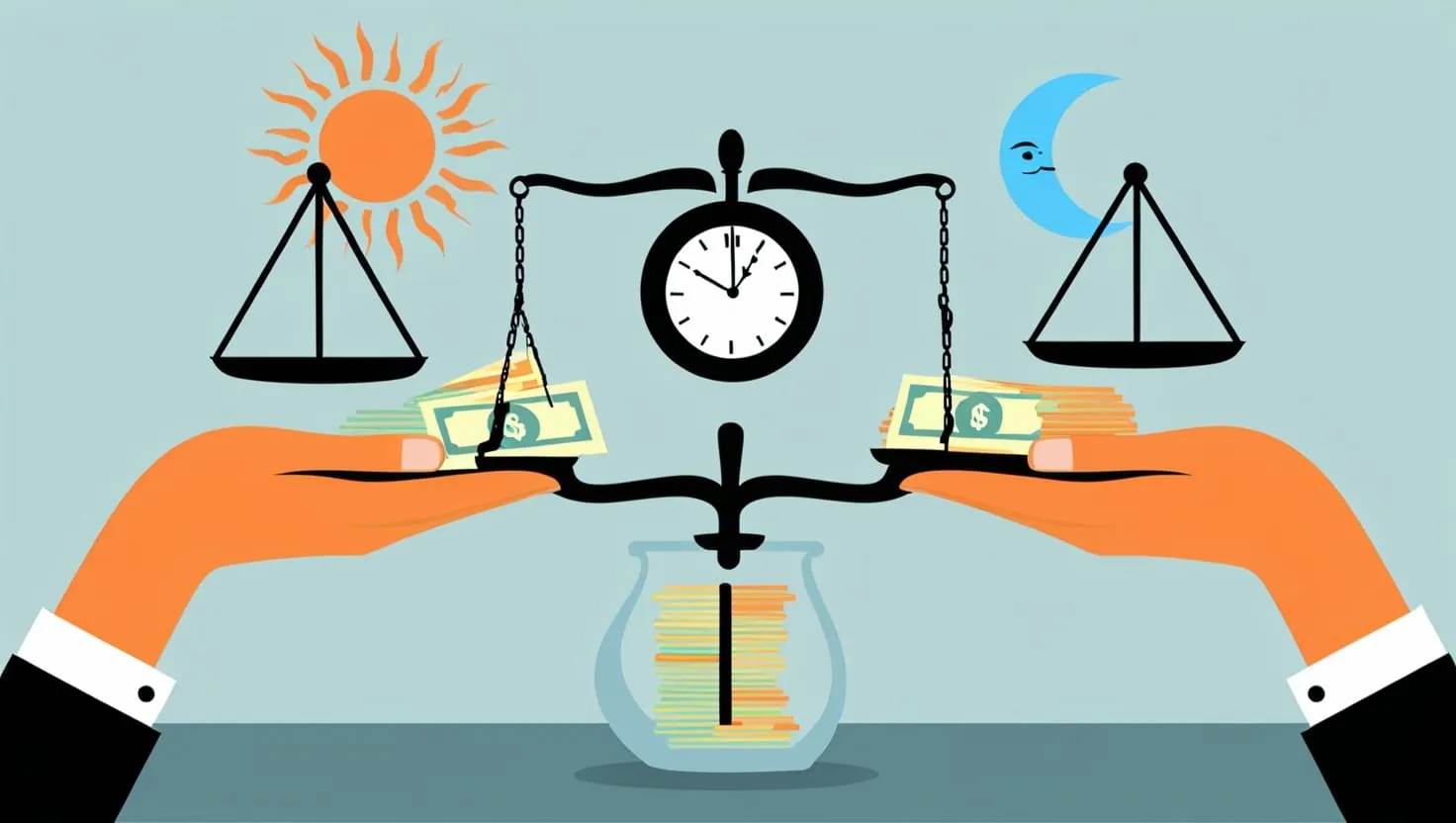Debt has become an integral part of the global economy, affecting everything from personal finances to national economic policies. The pervasive nature of debt is both a catalyst for growth and a potential source of economic disparity. At its core, debt allows individuals, businesses, and governments to borrow money with the promise of future repayment, usually with interest. This system enables entities to fund projects, expand operations, and drive consumption without needing immediate cash reserves.
However, the implications of debt differ dramatically across economic strata. For wealthy individuals and corporations, debt can be a powerful tool for amplifying wealth. They have access to favorable lending terms, such as lower interest rates and higher credit limits, which enable them to undertake larger investments with better returns. For example, the wealthy can secure loans with valuable collateral, reducing the lender's risk and often resulting in more advantageous loan conditions.
In contrast, those with fewer resources face higher borrowing costs and more stringent terms. This disparity in access and conditions perpetuates economic inequality, as the less affluent are often unable to leverage debt for significant financial growth. Additionally, while debt can provide short-term liquidity and investment opportunities, it also carries the risk of financial overextension, especially for those without substantial assets or income buffers.
The global trend of increasing debt is shaped by economic policies that often favor growth through borrowing. Central banks frequently set low-interest rates to stimulate economic activity, inadvertently benefiting those who can borrow large sums for lucrative investments. As a result, the gap between the wealthy and the poor continues to widen, driven by the differential impact of debt on these groups.
What is Debt?
Debt is essentially money borrowed that must be repaid, usually with interest. It comes in many forms, including loans, mortgages, credit lines, and bonds. The terms of debt, such as interest rates and repayment schedules, vary widely and are typically determined by the borrower's creditworthiness and the risk to the lender.
For individuals and businesses, debt provides a means to fund purchases and investments that might otherwise be unaffordable. A mortgage, for example, allows people to buy homes without needing the entire purchase price upfront. Similarly, businesses can use loans to invest in new projects, equipment, or expansions, hoping that the returns will exceed the cost of borrowing.
However, the cost and accessibility of debt are not uniform across economic classes. Wealthier individuals often have access to lower interest rates and more favorable terms due to their higher credit ratings and valuable collateral. This can significantly reduce their borrowing costs and increase the profitability of their investments. For instance, they might secure loans at lower rates by using their assets as collateral, minimizing the lender's risk.
Conversely, those with lower incomes and fewer assets face higher borrowing costs and more restrictive terms. High-interest rates and the requirement for substantial collateral can limit their access to credit, hindering their ability to make significant financial strides. This disparity is a fundamental reason why debt can be a tool for wealth accumulation for the rich, while it poses a substantial risk and burden for the less affluent.
Debt as a Wealth Amplifier for the Rich
Debt serves as a powerful amplifier of wealth for the rich due to several advantages they possess. One key factor is their ability to secure loans with favorable terms. Wealthy individuals typically have high credit scores and substantial assets, which enable them to obtain lower interest rates and better borrowing conditions. This contrasts sharply with the terms available to those with fewer resources, who often face higher interest rates and more stringent borrowing conditions.
Wealthier borrowers can use their assets as collateral, reducing the lender’s risk and securing more advantageous loan terms. For example, a wealthy individual might use their property or stocks as collateral to obtain a loan at a lower interest rate. This collateral not only provides security to the lender but also lowers the cost of borrowing for the borrower. In turn, this makes their investments more profitable and sustainable over the long term.
Another advantage is the ability of the rich to access exclusive investment opportunities that offer higher returns. Wealthy individuals often have connections to private equity funds, hedge funds, and other investment vehicles that are not available to the general public. These investments can yield substantial returns, further increasing their wealth. Additionally, they can afford to hire top-tier financial advisors and wealth managers who provide strategic advice to maximize returns and minimize risks.
The concept of "returns to scale" also plays a significant role. Simply put, the more wealth one has, the greater the returns on investments tend to be, even on relatively safe and conservative investments. This creates a cycle where the rich get richer simply by having the means to invest more and achieve higher returns on their investments.
In essence, debt enables the wealthy to leverage their existing assets to create more wealth, perpetuating and expanding the gap between the rich and the rest of the population. This dynamic underscores the significant impact that access to favorable borrowing conditions has on wealth accumulation and economic inequality.
The Role of Collateral and Risk in Lending
Collateral and risk assessment are fundamental components of the lending process, significantly influencing the terms and accessibility of debt. Collateral refers to assets pledged by a borrower to secure a loan. If the borrower defaults, the lender can seize the collateral to recover the loan amount. This security reduces the lender's risk, often resulting in lower interest rates and more favorable loan terms for the borrower.
Wealthy individuals have substantial assets they can use as collateral, such as real estate, stocks, or other valuable holdings. This lowers the lender's perceived risk, allowing the wealthy to access larger loans at lower interest rates. For instance, a wealthy individual might use their high-value property to secure a low-interest loan, which they can then invest to generate higher returns. This leverage amplifies their wealth, as they can borrow more money cheaply and invest it profitably.
In contrast, individuals with fewer assets face higher borrowing costs. Without significant collateral, lenders perceive these loans as riskier, leading to higher interest rates and stricter terms. This makes it more challenging for less affluent individuals to access the capital needed for significant investments or to manage financial emergencies effectively. The requirement for substantial collateral also means that those with fewer resources are often excluded from lucrative borrowing opportunities that could enhance their financial standing.
Moreover, risk assessment involves evaluating the borrower's credit history, income stability, and overall financial health. Wealthy borrowers typically have strong credit histories and stable income streams, further reducing their borrowing costs. This combination of low risk and high collateral value enables the wealthy to use debt as a strategic tool to enhance their financial growth, while those with limited assets remain at a disadvantage.
Tax Benefits of Debt for the Wealthy
Debt can be an effective tool for reducing taxable income, providing substantial tax benefits to the wealthy. One of the primary advantages is the ability to deduct interest payments on certain types of loans, such as mortgages and business loans. This deduction lowers the borrower’s taxable income, thereby reducing their overall tax liability. For the wealthy, who often have significant income and sizable loans, these deductions can translate into substantial tax savings.
For example, mortgage interest deductions allow homeowners to deduct the interest paid on their mortgage from their taxable income, which can be a significant amount given the high value of properties owned by the affluent. Similarly, business owners can deduct interest paid on loans used to finance business operations, investments, or expansions. This not only reduces their taxable income but also encourages the use of debt as a financing tool, as the cost of borrowing becomes partially offset by tax savings.
In the corporate world, interest on business debt is generally tax-deductible, which incentivizes companies to finance growth and acquisitions through borrowing rather than equity. This is particularly advantageous for large corporations and wealthy business owners who can leverage substantial loans at favorable rates. The tax-deductible nature of interest payments effectively lowers the cost of borrowing, making debt a more attractive option compared to raising capital through issuing new equity, which can dilute ownership.
Elon Musk’s Twitter Acquisition
Elon Musk’s acquisition of Twitter provides a prime example of how the wealthy leverage debt to maximize financial benefits and minimize tax liabilities. In 2022, Musk orchestrated the purchase of Twitter using a combination of loans secured against his Tesla shares and personal funds. Instead of selling Tesla shares to finance the acquisition, Musk strategically used debt to avoid triggering capital gains taxes that would have resulted from liquidating his stock holdings.
By using his Tesla shares as collateral, Musk secured loans with relatively low interest rates due to the high value and stability of the collateral. This approach allowed him to retain ownership of his Tesla shares, avoiding the immediate tax implications and potential dilution of his wealth that would have occurred had he sold the shares. This strategy exemplifies how the wealthy use debt to access significant capital while preserving their existing assets and minimizing tax burdens.
The transaction also highlights the broader strategy of using debt to acquire and grow assets without reducing one’s net worth through asset sales. By keeping his Tesla shares, Musk not only maintained his influence and voting power in Tesla but also benefited from any future appreciation of Tesla’s stock. This approach showcases how debt, when used strategically, can enable significant financial maneuvers without immediate financial sacrifices.
Musk’s use of debt for the Twitter acquisition also underscores the advantages of financial leverage available to the wealthy. The ability to secure large loans at favorable terms, backed by high-value collateral, is a privilege that further entrenches wealth inequality. It allows the rich to engage in substantial financial activities that can lead to even greater wealth accumulation, perpetuating the cycle of wealth concentration among the affluent.
Debt in the Corporate World
In the corporate realm, debt is a fundamental tool for financing growth and expansion without diluting ownership stakes. Companies often prefer debt financing over equity financing because it allows them to raise capital while maintaining control and ownership of the company. This approach is particularly advantageous for large corporations and wealthy business owners who have access to favorable borrowing terms.
Debt financing can take various forms, including corporate bonds, loans, and lines of credit. Corporate bonds are a common method where a company issues bonds to investors, promising to pay back the principal along with interest at a specified rate over a predetermined period. This method enables companies to secure large sums of money for significant projects such as mergers and acquisitions, research and development, and infrastructure expansion.
One of the primary benefits of using debt in the corporate world is the tax deductibility of interest payments. This effectively lowers the cost of borrowing and enhances the overall profitability of the investment. For example, if a company borrows $10 million at a 5% interest rate, the annual interest expense of $500,000 is tax-deductible. This reduces the company’s taxable income and, consequently, its tax liability. This tax benefit makes debt an attractive financing option compared to issuing new equity, which would dilute the ownership stakes of existing shareholders.
Additionally, debt can be strategically used to manage the company’s capital structure. By maintaining an optimal balance of debt and equity, companies can achieve a lower weighted average cost of capital (WACC), maximizing the firm’s value and shareholder returns. This balance is crucial for corporate financial health, as excessive debt can lead to financial distress, while insufficient debt may result in missed growth opportunities.
The Risk of Over-leverage for the Wealthy vs. the Poor
Debt can act as a double-edged sword, particularly when it comes to over-leverage. For the wealthy, over-leveraging can still pose significant risks, but their substantial assets and diverse income streams often provide a cushion against potential financial downturns. They can leverage debt extensively to finance investments, acquire assets, or expand their businesses, capitalizing on their ability to secure favorable loan terms due to their higher creditworthiness and valuable collateral.
The wealthy often engage in strategic borrowing, using debt to enhance their wealth without liquidating their assets. This ability to use debt effectively can lead to substantial financial gains, provided that their investments yield positive returns. However, if the investments fail or the market conditions deteriorate, even the rich can face financial distress. Their larger asset base, however, often allows them to weather such storms better than those with fewer resources.
On the other hand, the poor are more vulnerable to the adverse effects of over-leverage. With limited assets and lower credit ratings, they are often subjected to higher interest rates and less favorable loan terms. This increases the cost of borrowing and makes debt repayment more challenging. Even small financial setbacks can lead to significant difficulties, as they lack the financial buffer to absorb unexpected expenses or income losses.
For instance, a poor family might rely on high-interest credit cards for emergencies, accumulating debt that quickly becomes unmanageable due to exorbitant interest rates. This can lead to a cycle of debt that is hard to escape, further exacerbating their financial instability. Unlike the wealthy, they have fewer resources to refinance or consolidate their debt at better terms.
Global Debt Trends and Economic Policies
Global debt has been on a relentless rise, driven by both public and private borrowing. Governments, corporations, and individuals alike have turned to debt to finance growth, manage economic downturns, and stimulate spending. Central banks play a crucial role in this dynamic by setting interest rates and implementing monetary policies that influence borrowing costs.
Low-interest rate policies, especially in the wake of financial crises or economic slowdowns, are designed to encourage borrowing and investment. Central banks lower interest rates to make loans cheaper, hoping to spur economic activity. While this can lead to economic growth, it also disproportionately benefits those who are already wealthy. Wealthy individuals and large corporations, with their strong credit histories and substantial assets, can access these cheap loans more readily and invest in high-return ventures, thereby increasing their wealth further.
Moreover, governments often engage in deficit spending during economic downturns, borrowing heavily to finance stimulus packages and public services. While this can provide necessary economic support, it also leads to increased national debt. In many cases, the servicing of this debt—paying interest on government bonds—becomes a significant part of national budgets, influencing fiscal policies and potentially leading to austerity measures that can disproportionately affect the less affluent.
For corporations, global debt trends have seen a rise in the issuance of corporate bonds and other debt instruments to finance mergers, acquisitions, and expansions. The ability to borrow at low rates means companies can grow more aggressively, but it also introduces risks of over-leverage. Should interest rates rise or economic conditions worsen, these corporations may face significant financial strain, impacting their employees and stakeholders.
These global debt trends reflect broader economic policies that often aim to balance growth with stability. However, the benefits and risks associated with debt are not evenly distributed, often exacerbating existing inequalities. Wealthy individuals and corporations are better positioned to capitalize on low borrowing costs and favorable economic policies, while those with fewer resources may find themselves deeper in debt with fewer opportunities for financial growth.
Conclusion
The strategic use of debt is a key factor in the ongoing cycle of wealth accumulation among the rich and the perpetuation of economic inequality. Debt allows the wealthy to leverage their existing assets to secure loans at favorable terms, invest in high-return ventures, and enjoy tax benefits that further increase their wealth. This process is facilitated by economic policies and global financial trends that often favor those with substantial assets and strong credit histories.
For instance, low-interest rate policies designed to stimulate economic growth disproportionately benefit the wealthy. They can access cheap credit to finance investments and business expansions, leading to significant returns on investment. This cycle of borrowing and investing enables the rich to grow their wealth more rapidly compared to those with fewer resources.
Conversely, those with fewer assets face higher borrowing costs and stricter loan terms, limiting their ability to use debt effectively for financial growth. High-interest rates on loans and limited access to credit make it difficult for lower-income individuals to invest in opportunities that could improve their financial standing. As a result, they are more vulnerable to financial crises and less able to benefit from economic policies designed to stimulate borrowing and spending.
Moreover, the tax advantages associated with debt, such as deductible interest payments, further skew the benefits towards the wealthy. These tax benefits reduce the effective cost of borrowing for the rich, allowing them to retain more of their income and invest in additional wealth-generating opportunities.
In summary, the strategic use of debt by the wealthy not only helps them maintain and grow their wealth but also exacerbates economic disparities. Addressing these issues requires comprehensive policy changes aimed at leveling the financial playing field, ensuring that the benefits of economic growth and debt financing are more equitably distributed.






